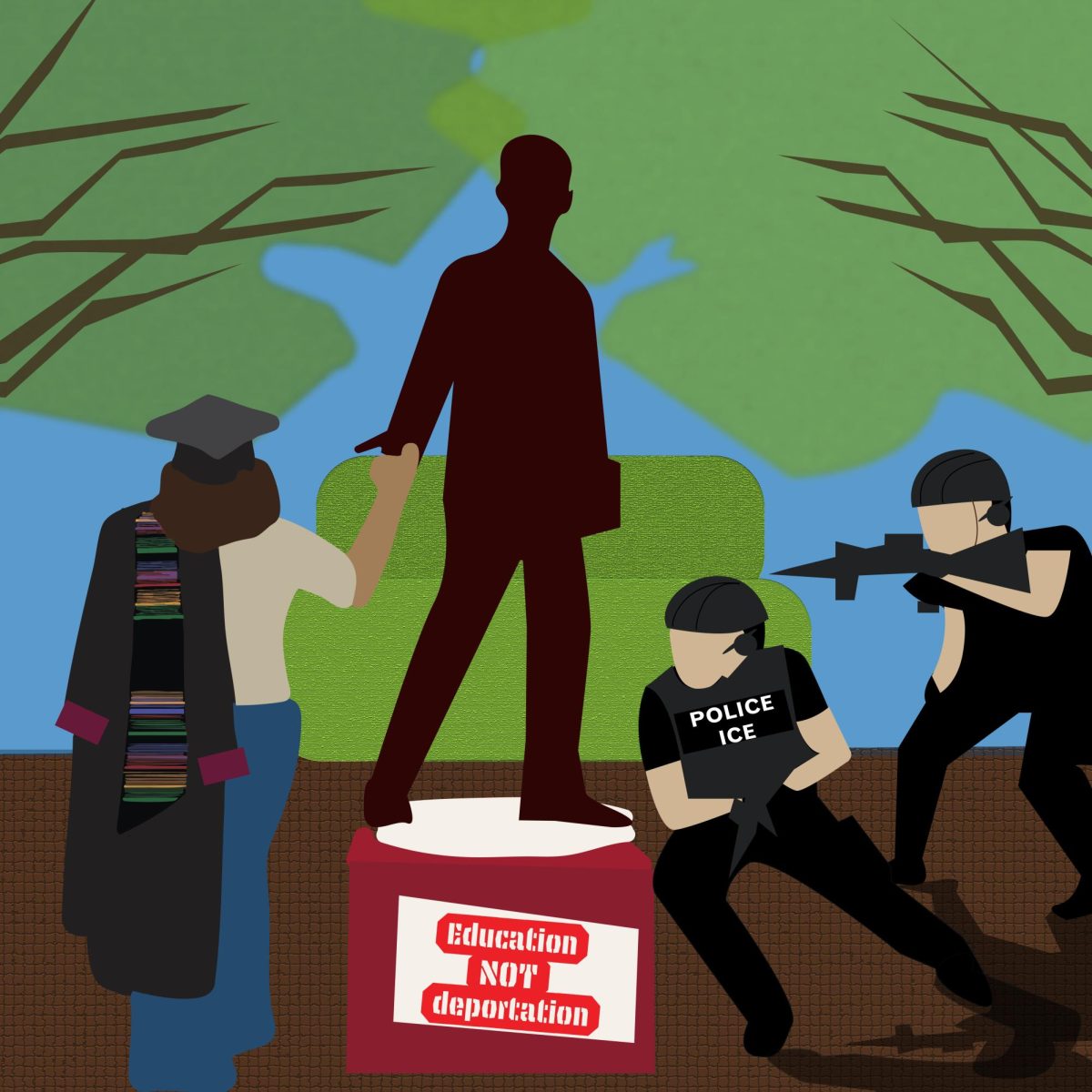
The University Star editorial board does not condone the demonstrators’ message on Nov. 6.
At around 12:20 p.m. the day after the presidential election, our managing editor saw the beginning of a demonstration. Hundreds of students surrounded the Stallions statue, angry at two men and the messages on their signs. As a result, The University Star talked to TXST officials to figure out what happened to inform our audience; a story that amassed nearly 40,000 views on our website.
While some readers complained that we covered the demonstrators message at all, we wanted to share an inside look at our newsroom and the decisions behind our approach to covering this story, helping you better understand our process.
The Society of Professional Journalist’s (SPJ) Code of Ethics has four principles. The Star uses these ethics as a framework for our coverage, including the demonstration on Nov. 6.
The first principle is to “seek the truth and report it.” We did this by talking to Texas State officials, University Police Department (UPD) officers and people present at the demonstration. We found out what was happening and reported the truth; nothing more and nothing less.
The second principle is to “minimize harm.” We are doing this by not including the voice of Official Street Preachers in our coverage and not showing any pictures of the signs without a trigger warning. This is also why our main image for the story is not of the signs, because we do not want to cause harm to our readers.
The third principle is to “act independently.” We did this by avoiding conflicts of interest and seeking official sources who spoke impartially. We did not let our personal beliefs or positions influence our coverage.
Finally, the last principle is to “be accountable and transparent.” We’re doing this right now by telling our audience how we will report on this and future demonstrations. We recognize the responsibility and accountability we have in which messages we choose to cover and how our coverage amplifies these messages.
We believe deeply in and live by the First Amendment every day.
While The University Star firmly opposes the harmful messages displayed by the demonstrators, as journalists we must uphold a fundamental truth: hate speech, however offensive, is still protected as free speech. The Supreme Court has affirmed this in landmark cases like Matal v. Tam, which underscores that the First Amendment does not allow the government, or public institutions like Texas State, to silence viewpoints based solely on their offensiveness.
If another event like this happens, we will cover the facts like we did on Nov. 6, but we will not reprint hateful messages. We will also no longer include pictures of signs like the ones the Official Street Preachers held. While we want to keep our audience informed, it’s important that we minimize harm and not overexpose or amplify messages that can hurt the community we proudly serve.
The presence of both the demonstrators and the hundreds of counter-protesters highlights the principle that free speech applies to all voices. This commitment to free speech is essential, not to shield hate, but to prevent the erosion of rights for everyone. For over a century, The University Star has championed this fundamental freedom, standing firm in our mission of defending the First Amendment since 1911.
The Main Point is an opinion written by The University Star’s Editorial Board. Opinions expressed are not necessarily those of our entire publication.
















